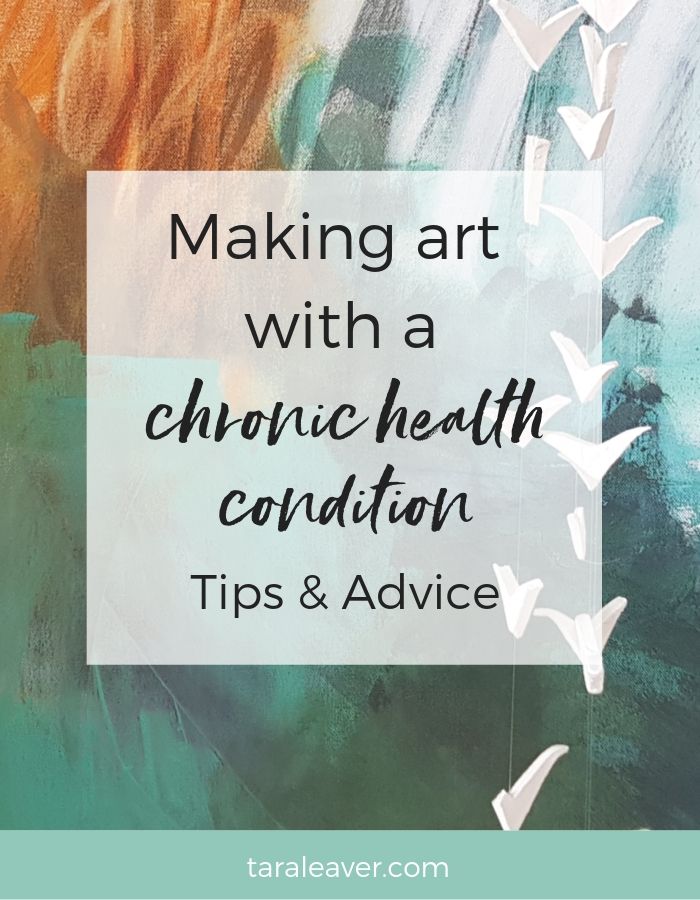
Recently, I was asked by reader Annalies {of @blossom1975 on Instagram} for my advice on making art with a chronic health condition.
I had to be honest and say I didn’t feel qualified to answer that question, since I don’t have personal experience of it. So, with Annalies’ permission, I turned it over to our lovely community on Instagram, and there was an outpouring of support and advice for her question.
I decided to turn it into a blog post as I know there are many out there who deal with daily health issues that make art making a challenge, and who might benefit from or appreciate knowing they’re not alone and that there are ways!
Shilpa Agashe
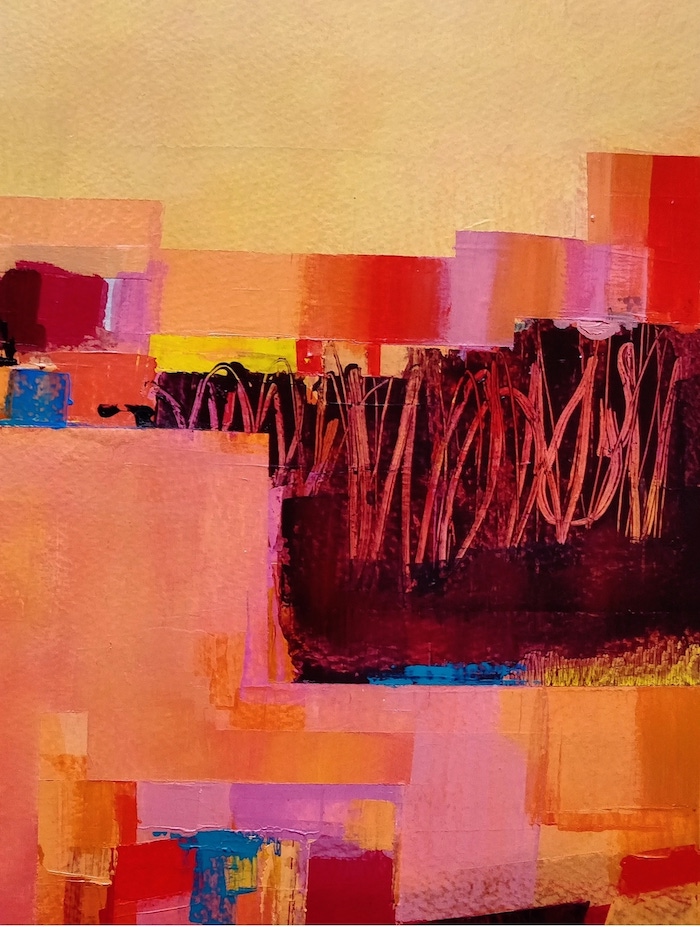
“I have chronic migraines and can lose up to 2 weeks in the pre attack, migraine and post attack phases due to lethargy, lack of energy, pain, other physical symptoms. It’s not possible for me to work on my core painting projects at such times so what I have worked out for myself is:
1- Develop a style of work that’s less resource intensive. I work with fine liners on paper and make line there’s hardly any clean up and I can work cuddled up in bed,on the sofa etc.
2 – Work small. Working small allows me to finish a piece which results in a positive cycle of gratification rather than ‘I can’t do this’ frustration.
3 – If I can’t paint or draw I might prep. Get masking tape on paper, make off my edges, cut paper. Things that will help me jump straight into painting when I back to normal.
Tracey Downing
“I have a chronic health condition and I find art making really helps… Just do what you can when you can and be kind to yourself.”
Gillian Bacon
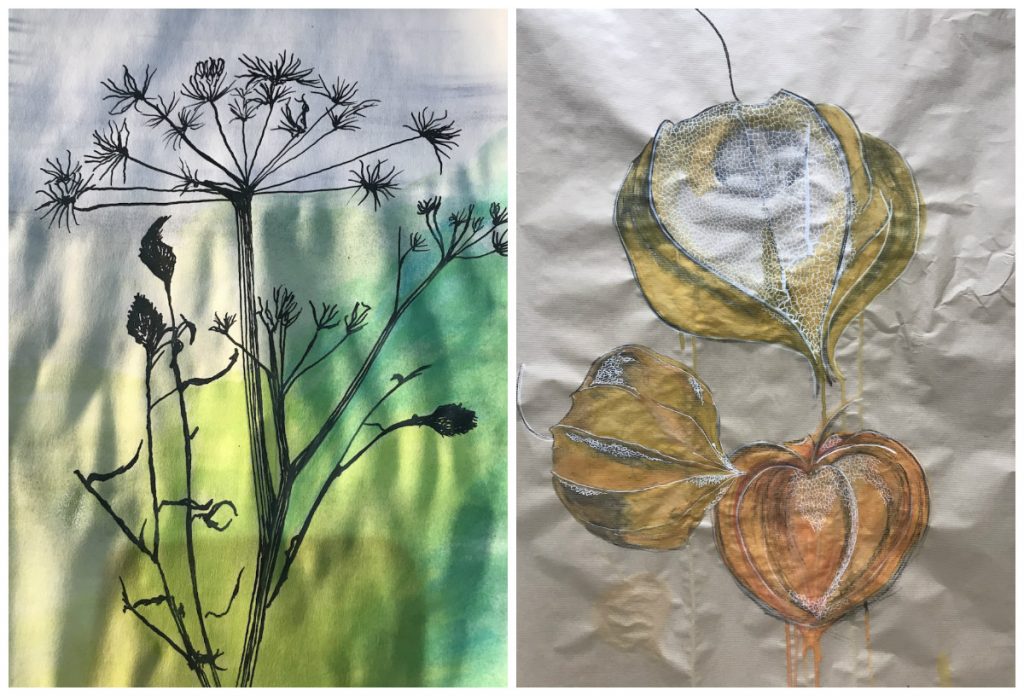
“I have the same struggles and the pain can get me so down that I lose my mojo. That’s the reason I do [Tara’s] courses – they help to give me spark and when I can’t move I can still sit and watch the videos.
It’s also about not stressing yourself when you can’t manage stuff. It’s also nice to have a good support group.”
Carla Callier
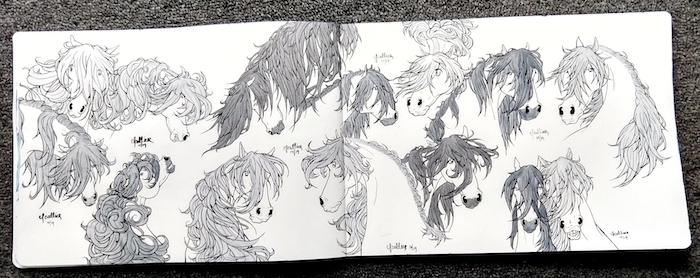
“I pick the art supplies I truly love and have fun with. If art making feels like a chore I don’t want to bother. I can also be honest with myself on what do I feel like making, not ‘what do I think others want to see’.
If I’m having an off day I don’t stress about not feeling up to creating that day ( or days). Too much I see a stress on ‘You must make art every day to be a real artist!’ That doesn’t work for everyone and it stressed and burned me out.
I also make sure to stop what I’m doing if I start to feel tired. It can always be finished later. I am better off for being aware of what works for me and makes me feel creative.
I love watching artists on YouTube and looking at art on Instagram because it inspires me to create. It helps remind me I really do love it and to want to make a little something even if it’s only for five minutes. As long as I’m trying, being kind to myself, learning, and enjoying what I am making nothing else matters.”
Pia Juul
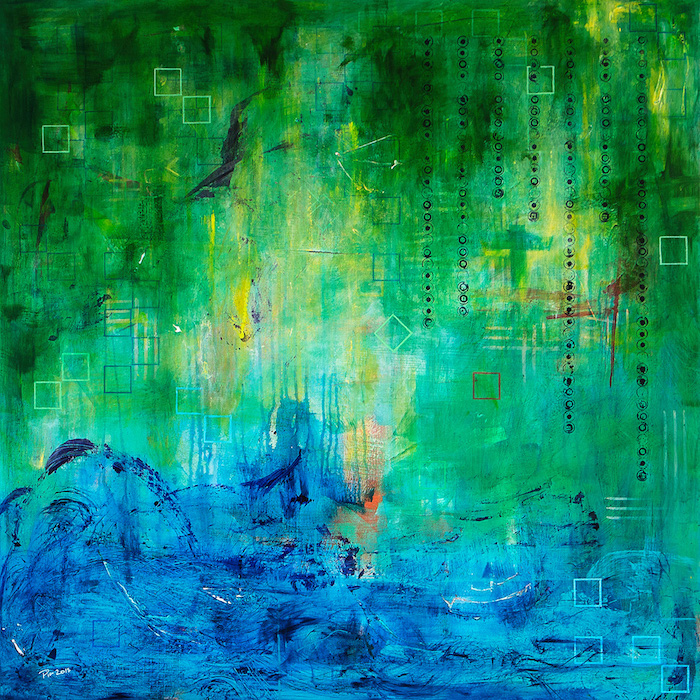
In the latter case I have various strategies, but multiple types of crafts are often the solution; I don’t have to PUSH at the painting even if that’s what I meant to do, because I can go weave a bit or spin some yarn. I recently started learning to make papermache figures.
Shifting to something new makes my brain happy and sets ideas flowing on that topic, resistance forgotten. And once I’m rolling it’s easier to switch back to the painting because paper glue needs to dry, so there is wait time.
Another thing I’m trying is to accept that although it’s MAKING that is my goal, some ideas may not have to make it that far.
Perhaps acknowledging the spark, making a sketch, a colour swatch, a detailed note in my workbook and making a new inspirational pin board from the couch on the topic is enough – the joy of working the idea in any way possible.
Another lesson is, when you have a good day, don’t go all in and try to gain the terrain you lost. Take breaks before your mind thinks you need them, schedule them even so your body knows it can rely on you.
Oh, and having a space where projects can be laid out forever without having to tidy for guests or dinner = GOLD. In case of multiple crafts = a workstation for each is even better. Yes you deserve it.
Ok, just one more thing: Break a task into micro steps, make a list if need be to get them out of your head. And fork the housework. Bottom of list, always.”
Do you have a chronic health condition that challenges you when it comes to making your art? What do you do to support yourself in that? Please do share any thoughts and advice in the comments!







I have severe chronic pain from an accident 30+ years ago. Over the years I’ve learnt many ways to control and reduce my pain. Painting is a great distraction from pain and is, for me, essential for my mental and emotional health.
Another part of my life is devoted to helping others with chronic pain via my website, PainSupport.co.uk, books, CDs and downloads. This is a major commitment but I set aside as much time as I can for my painting, occasionally as much as an hour, other times five minutes or so. I’m always aware of my need to ‘pace’ myself, I find a timer essential for this, and do my best to stop and walk about for a few minutes every now and then.
Thank you Tara for all you do and the most generous way you share your work. You’re a constant inspiration.
https://www.instagram.com/jan_sadler/
Thank you for sharing all this Jan and for adding to the conversation. A timer can be such a super tool for so many reasons!
Hii, this is a nice post that I actually needed rn.
I have been depressed and I deal with some fatigue and pain a lot on the daily, and I love art for years now, so I’m jot stopping that any soon.
Articles and advice from people who shared experiences is awesome. Articles like these are always so helpful and can go long ways for encouraging and reminding to take breaks for other people like me me. So thanks for uplifting others in need.
First of all, thank you Tara, for the call out and writing about it! And also many thanks to al the contributors. It helped me to look at it in different ways. Sometimes I’m in some kind of loop where I’m a bit stuck in my own mind. First I’m gonna try the smaller pieces, and also only working with materials I love. ????
Thanks and have a nice day!
Annelies (blossom1975}
Thank you for asking the question Annelies! I’m sure this post will be helpful to others.
If and when I actually have a “good” day (no migraine, dizziness, nausea or light sensitivity) painting is usually the last on my to do list. Those days have been so few that my household must take priority as I am the only one not working. I am trying to pull myself out of my dark cave and accomplish a few things around the house everyday and then reward myself with a small art project at least twice a week. Down days are great for stocking up on inspiration-u tube art videos, collecting photo references, decluttering my workspace, revisiting my older paintings and studying lighting and landscapes in movies. I have lowered my production expectations until I can count on having more good days. Family and friends understand “their” painting is not forgotten, just a work in progress and encouragement to feel better. @paintrosaic Instagram
Thanks for sharing your experience and tips Teresa. Helps so much to have understanding people around you, and to be able to be kind to yourself about how many ‘spoons’ you have on any given day.
I’ve got fibromyalgia and several other chronic diseases as a result of going through breast cancer a couple of times. So well I’m very grateful to be alive from the cancer, these other diseases have caused me to no longer be able to work. So I empathize with the person above you said you’re the only one that doesn’t work and they need to keep the house clean. I try and do a little bit of housecleaning every day, even if it’s only five or 10 minutes. Then when I feel good I can keep the housekeeping time down to a low number, And give that time to my painting.
Of course it doesn’t always work, but if this helps someone else I will be very glad that I shared it.
Thanks for sharing this Shawna!